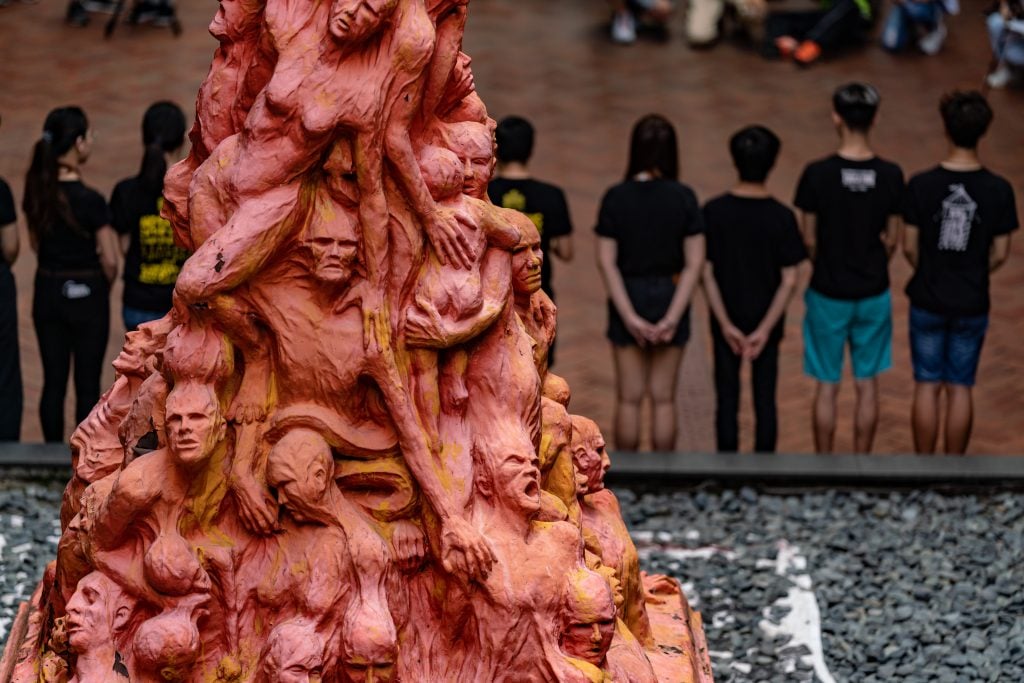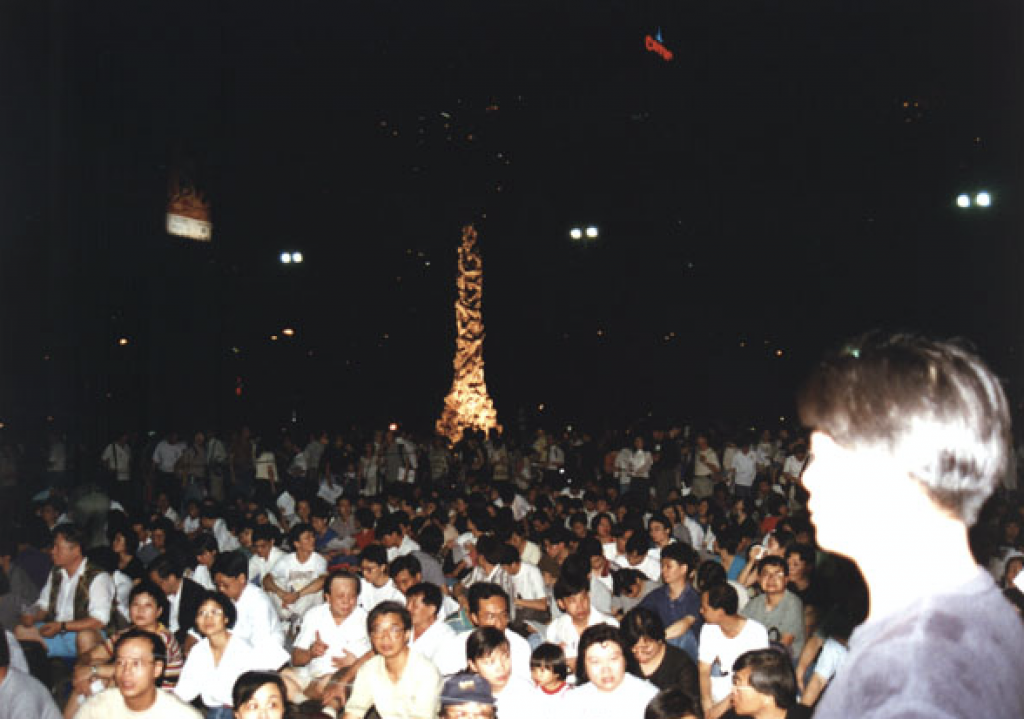Politics
Danish Artist Condemns Hong Kong University’s Removal of His Tiananmen Monument After Over 20 Years: ‘I Think They Will Destroy It’
Sculptor Jens Galschiøt says the attack on his work is an attempt to erase history.

Sculptor Jens Galschiøt says the attack on his work is an attempt to erase history.

Vivienne Chow

The Danish sculptor behind a monument commemorating the 1989 Tiananmen crackdown said he was shocked and saddened by the University of Hong Kong’s sudden order to remove the work after it had stood on campus for more than 20 years. He described the act as an attempt to erase the collective historical memory.
“I am shocked,” Jens Galschiøt, who created The Pillar of Shame and helped to erect the piece in Hong Kong in 1997, told Artnet News. “I think they will destroy it. It is my sculpture and you are destroying a valuable piece of artwork.”
Authorities have worked to obscure memories of the Tiananmen crackdown by banning books and targeting outspoken dissidents, “but never [by removing] a monument,” the artist said.
Liquidators of the now-dissolved Hong Kong Alliance in Support of Patriotic Democratic Movements of China, which worked with Galschiøt on the sculpture, received a letter dated October 7 from law firm Mayer Brown asking the alliance on HKU’s behalf to remove The Pillar of Shame from the university premises “no later than 5:00 p.m. on 13 October 2021.”
The university said it asked the alliance to do so because it is an external organization that is being liquidated, and also because of its own legal advice and risk assessment, according to local media reports.
The artwork will be deemed abandoned if the alliance fails to take it away, and “the university will deal with the sculpture at such time and in such manner as it thinks fit without further notice,” according to the letter seen by Artnet News.
“They really want to destroy everything about a story that China doesn’t want people to know about,” Galschiøt said. “I hope the art institutions around the world will do something [about this]. This is a monument that belongs to art. We call for action but there is not much time.”
The liquidators of the Hong Kong Alliance said in a statement that it was unreasonable for the University of Hong Kong (HKU) to change arrangements made in 1998 on such short notice. The university, they said, should uphold the values of freedom and justice by allowing the sculpture to stay.
Galschiøt, meanwhile, has been in the dark. While the Hong Kong Alliance, which organized the annual Tiananmen vigil until it was recently disbanded amid a police probe, has been the go-to source regarding the sculpture, the Danish artist said he is its rightful owner. He only learned about the matter when he was contacted by the press.

An archival image of the The Pillar of Shame first erected in Hong Kong in 1997 at the Tiananmen vigil in Victoria Park. Courtesy of the artist.
The 24-year-old sculpture is bound to be fragile, said the artist, and it could suffer irreparable damage if it is not handled by experts. “If, contrary to expectations, damage to the sculpture should occur, the university risks incurring a claim of compensation for that damage,” Galschiøt said.
The seven-meter-tall The Pillar of Shame was first erected in Hong Kong to commemorate the eighth anniversary of the Tiananmen crackdown just one week before the former British colony was handed over to China in 1997, the artist recalled. It was relocated to the HKU campus in 1998.
“It felt scary, the week before the handover,” the artist said. “But after a couple of months, nothing happened. China made the arrangements of one country, two systems and it was okay. But now, there’s only one country, one system.”
A number of civil society organizations in Hong Kong have folded following the implementation of the sweeping national security law imposed by Beijing last June. The law bans activities related to subversion, terrorism, secession and collusion with foreign forces to endanger national security. The Hong Kong government has repeatedly assured local and international communities that the law will only affect a small minority and people’s rights and freedoms would not be affected.
The attack on the sculpture is one of a number of moves targeting the memory of Tiananmen Square. The Hong Kong Alliance, which has been hosted the Tiananmen vigil and memorial events for three decades, was recently accused of being an “agent of foreign forces.” The police also raided the June 4 Museum, which is run by members of the alliance, and confiscated the exhibits. Galschiøt said most of his contacts at the alliance are now in jail and could not be reached.
Uffe Elbæk, MP and the former culture minister of Denmark, condemned the decision to remove The Pillar of Shame, saying that the suppression of democratic opposition in Hong Kong is “disgraceful and totally unacceptable.”
Galschiøt said his work served as not just a monument but also a tombstone for those who died in the crackdown. “We all believed that one day, we will put it in Tiananmen Square in Beijing,” the artist said. “One day, China will change. It was our dream, but now it’s a nightmare.”